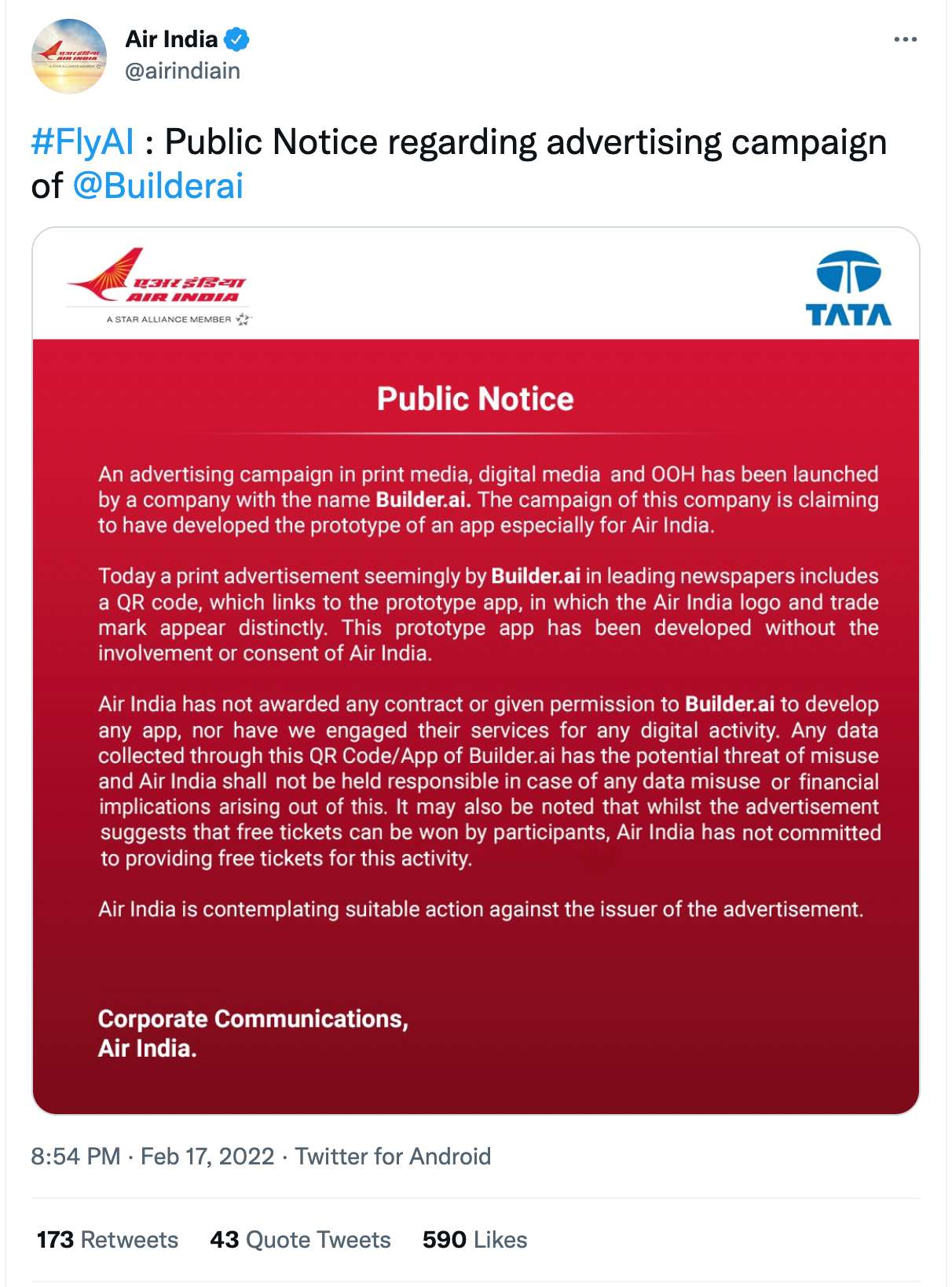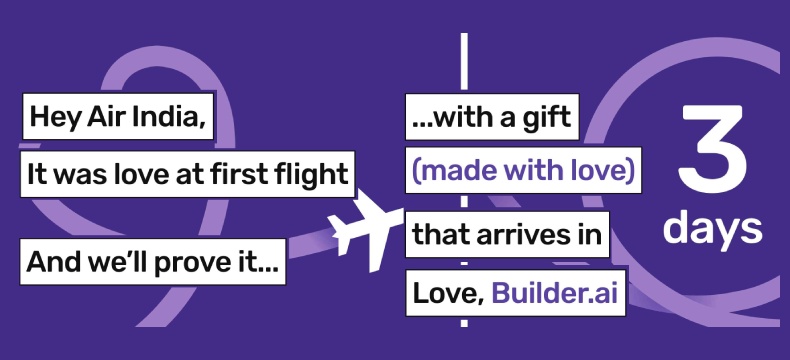
Related read: Builder says (in an interview with Moneycontrol) it reached out to Air India after the first unsolicited ad that mentioned their name, and Air India, according to Builder, did not insist on canceling the campaign’s next stage (app reveal). This still doesn’t explain why Air India finally reacted the way they did, including contemplating action against Builder (if they had mutually agreed to it).
On May 24, 2021, India’s Prime Minister Narendra Modi had a very odd appeal from the Landomus Group.
Pradeep Kumar, Chairman of Landomus Group, met with the Indian Prime Minister and expressed his interest to invest USD500 Billion (!), that too as the first phase of their investment, in the National Infrastructure Pipeline (NIP), and non-NIP projects listed by the Government of India under the India Investment Grid for the ‘Invest India’ initiative. But during the meeting, Modi did not say anything at all… not even a word!
Isn’t that odd?
Actually, it’s not. Because the meeting never happened, and that explains why Modi didn’t say a word. Landomus Group did want a meeting, though. But instead of trying to get a meeting either with the PM himself or the right people who can take the group’s intent across the Governmental hierarchy, they did something mighty odd.
They released a front-page ad in The Times of India and The Economic Times expressing their intent!
Batshit crazy? Not at all. Here’s the ad.

I had written about this ad by Landomus Group under the broader theme of ‘conversation sanctity‘.
In this case, a private company wanted to say something to the most powerful man in India and chose to say it in public. That’s akin to—in the offline equivalent—Mr. Padeep Kumar, with a megaphone in his hand, standing outside the Rashtrapathi Bhavan and shouting his intent… in the hope that the PM would listen (he is more likely to be whisked by Delhi Police, of course).
Hold on to this thought.
Advertising agencies frequently make what we call in agency parlance, ‘spec ads’. Speculative ads. Agencies usually make these for existing clients, in the hope to sell a new idea beyond any specific brief, or to potential clients, in the hope that the client may like it, be impressed with the creativity, and hire them.
Before the internet, such speculative ads for potential clients can only be sent through post or through some common friend. Now, on the internet, agencies, or agency reps may upload them online and hope that they become viral enough to reach the potential client somehow.
But this tactic goes away from the conversation sanctity too. The agency that’s not bold enough or smart enough to get an audience with the potential client, and hoping to somehow reach them through the internet is not all that smart. The attempt by them is unsolicited, plain, and simple.
Now imagine an agency releasing such a spec ad in the newspaper using their own money… in the hope that the potential client may see it and be impressed.
Would an agency think of doing something like that? Never. Because they know that the potential client is more likely to sue them for using the brand logo and name without their permission!
Then consider a software company that wants a particular company to be its client. Can they release an ad in the newspaper publicly wooing the company and expressing their interest to build software for them?
Feels stalkerish? It mostly is.
The point missing in all this is consent.
Between individuals, lack of consent is a huge problem that could end up as a criminal act.
Between companies, lack of consent is a legal problem.
Why? Because one party is using the logo and the name of the other without explicit permission.
This does not happen usually since most organizations have legal teams/people to steer them away from such obvious pitfalls.
One of my clients now was considering an interesting idea for Valentine’s Day on social media that involved using the names of a few other companies. And the first thing the team thought of was seeking permission from all the companies involved and getting it cleared by the legal team. That we started fairly late in our plan meant that we couldn’t clear much of the legal check, so we dropped the idea, among other reasons.
So, it is totally bizarre to see a company like Builder.ai woo Air India so openly via massive front/full-page ads!
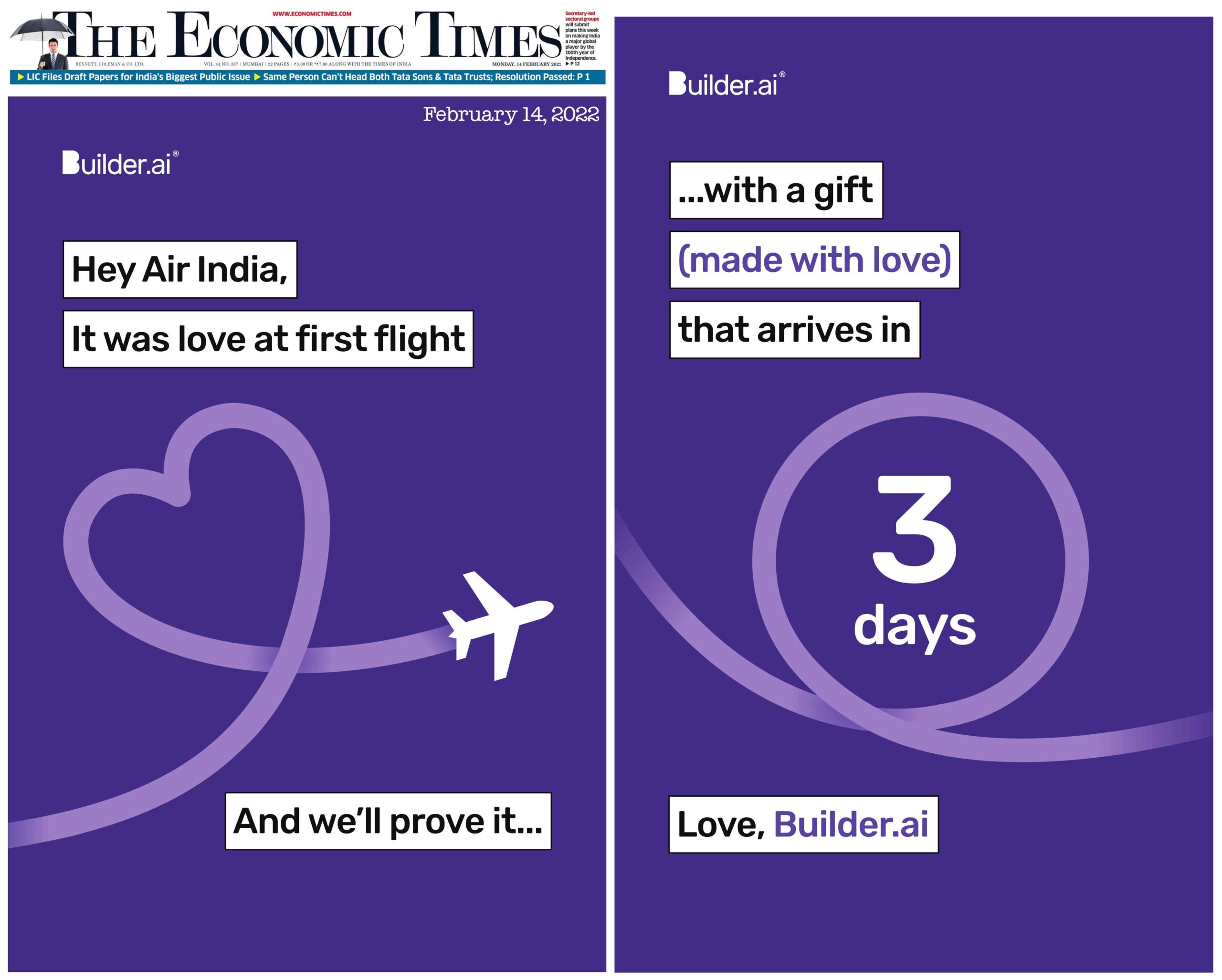
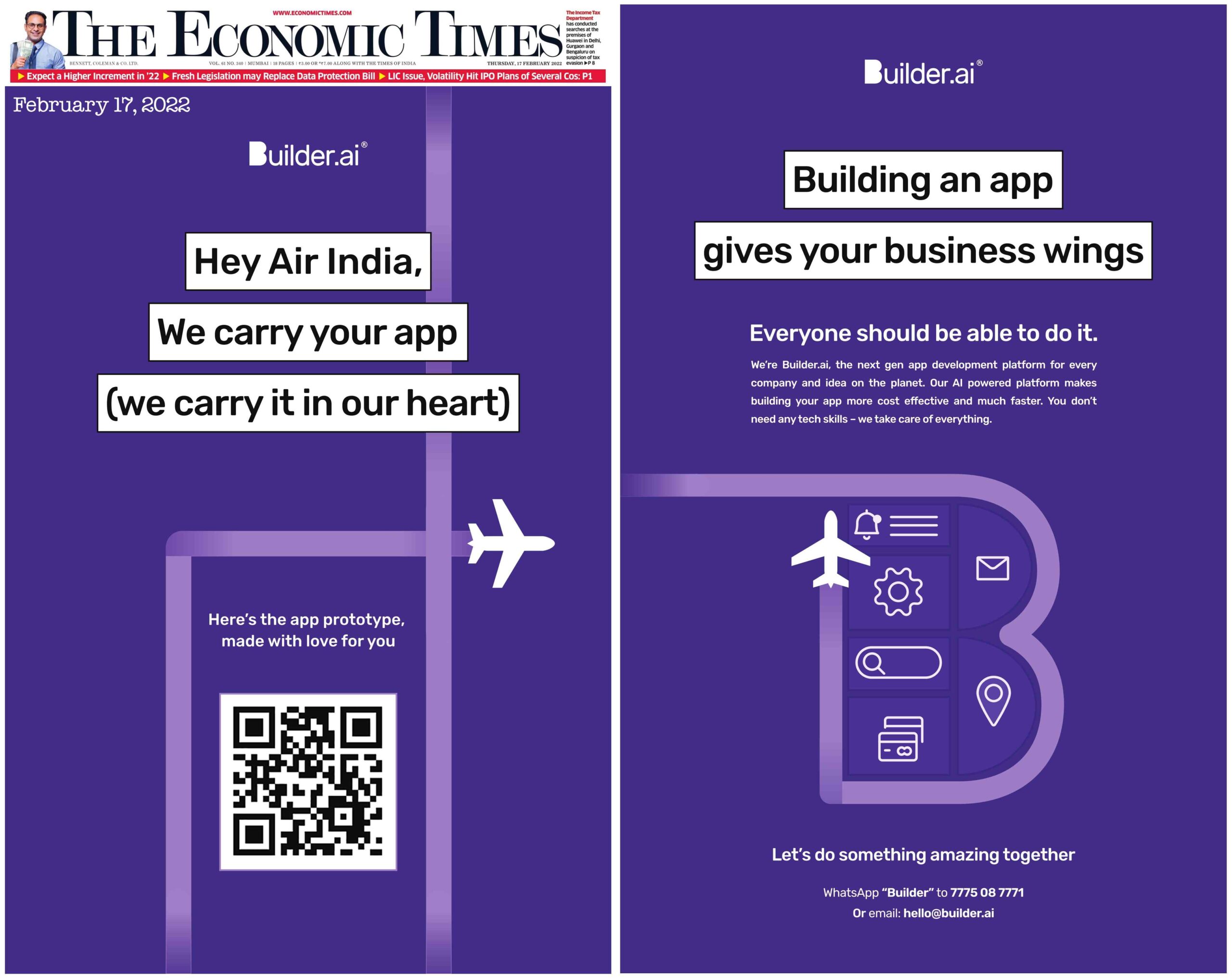
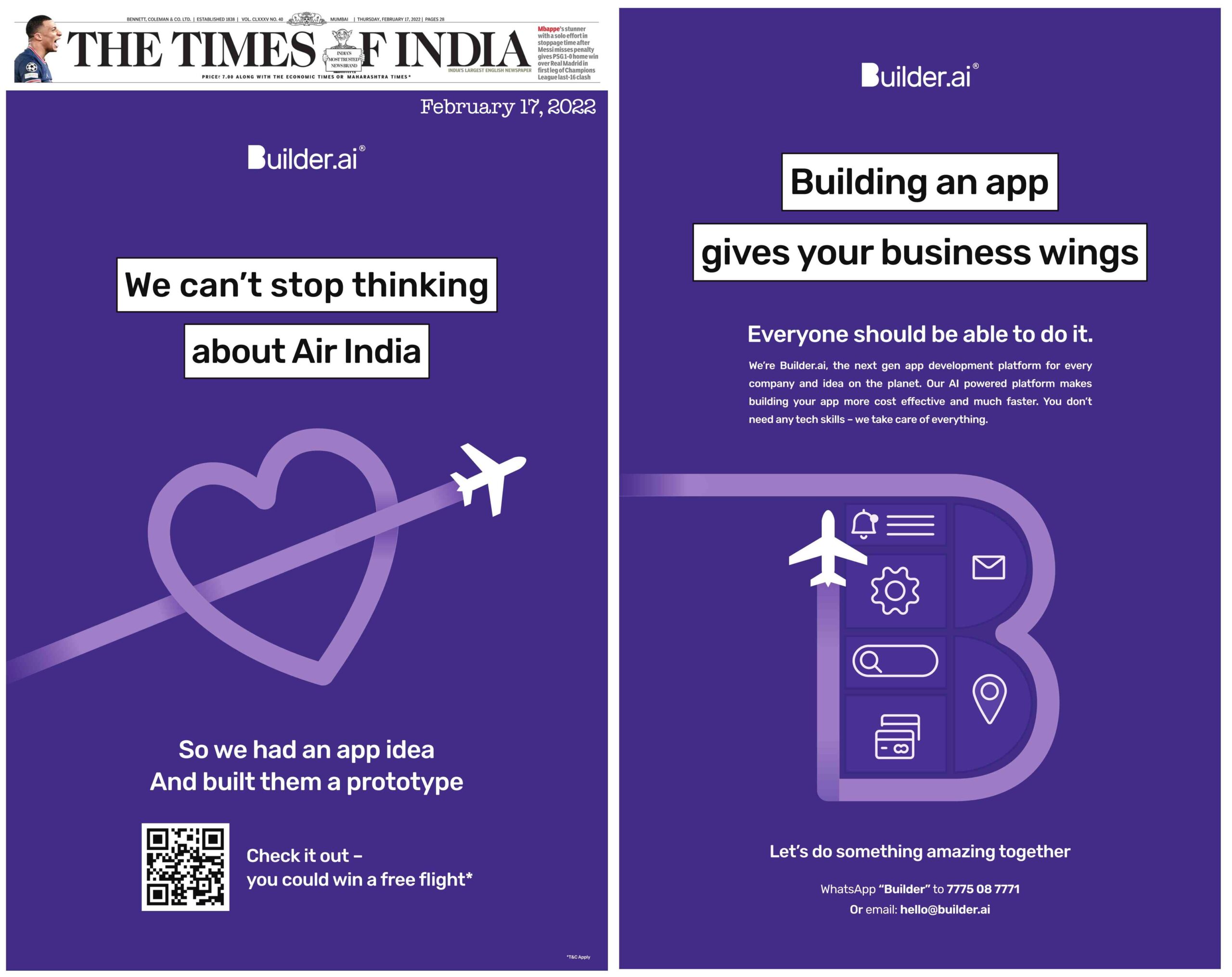
The idea, on paper, sounds sweet – Builder would profess love for Air India on Valentine’s Day and do something to express that love 3 days later (as promised on Feb. 14th).
But, peel off the ‘sweet’ layer and it ends up looking like an Indian cinema hero standing outside the house of the girl he loves (she doesn’t) and shouting her name. That such scenes were so common only a few years ago (they are considerably lesser, now) across Indian languages, in hindsight, seems shocking.
Builder, on its part, did deliver. They had a QR code on the 17th and that led to a LOT of screens of Air India’s mobile app, built by Builder using all of Air India’s visual identity and logo.
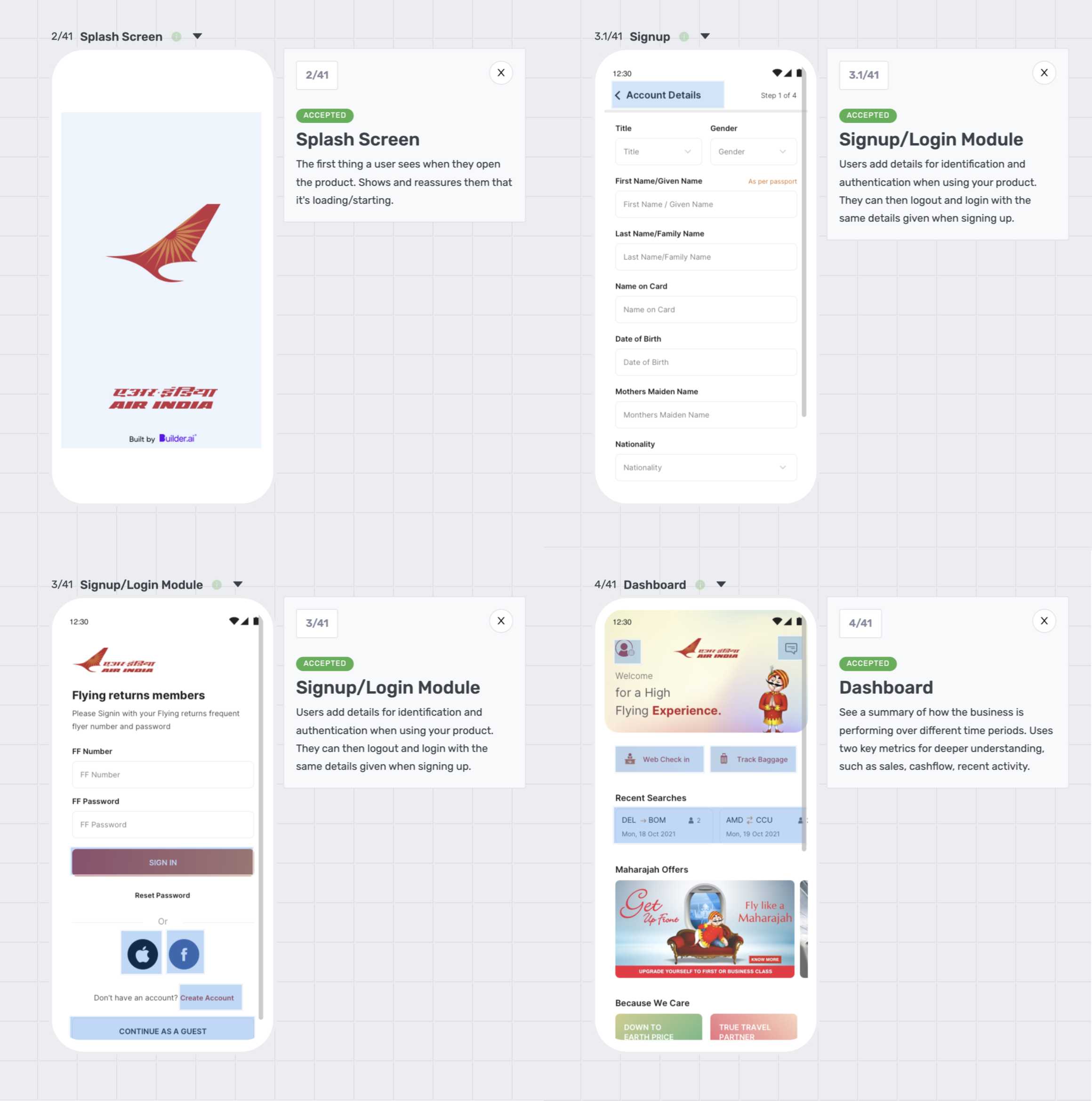
There was also a form for people to leave their details to win a reward (free flight!) that comes up if they choose ‘Yes’ to a question, ‘Do you think Air India should build this app with us?’ without ‘No’ as an option 🙂
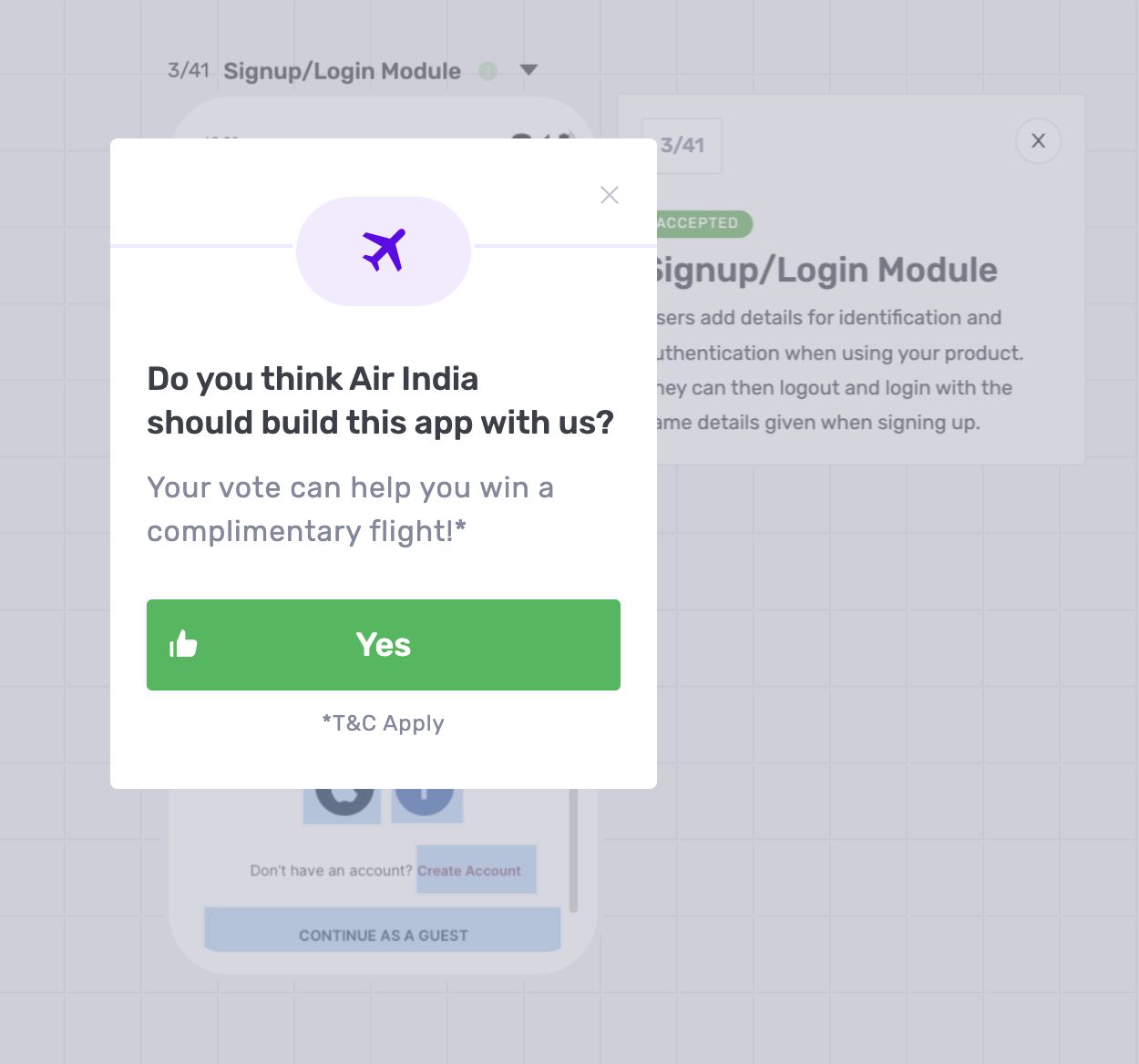
I get the idea – Builder wanted to demonstrate what they do well to an audience (more so the business audience, considering both legs—Feb. 14th and Feb. 17th—of the campaign were on Economic Times, while only the Feb. 17th part was on The Times of India) in the hope that the work would lead to incoming leads and interest from potential clients.
But there are a few issues that Builder overlooked:
- Air India was never approached for their consent about this campaign no matter how benign the intent was
- Air India is now—very publicly—part of the Tata Group. And if at all they are looking at a new app/revamp of the app, it is a decision that will be taken by Tata Group when they see fit (and perhaps hand it over to TCS!)
- At the very minimum, Builder is using Air India’s name in the ads, and the logo in the app prototype itself. This is all happening without Air India’s knowledge or permission
Ironically though, Builder has been mentioning Air India on its tweets since February 14th (besides the Economic Times ad on the same day; as also outdoor billboards, I believe). But Air India chose to react only on the 17th of February when the 2nd phase of the ad went live with the prototype app screens.
Till the prototype was shared with the public, Builder was more like Shah Rukh ‘Darr’ Khan standing outside Juhi ‘Air India’ Chawla’s home and generally causing a ruckus. But on the 17th, BuilDarr used a huge portrait of JuhiAirIndia and started shouting that she may start liking him. That’s probably why Air India felt compelled to disassociate itself from Builder’s campaign vocally, besides expressing its intent to pursue the whole thing legally.
With the prototype sharing done on 17th February, it is fairly obvious that there’s no involvement from Air India, or so I assumed, though many people didn’t think like that and assumed that this was a joint exercise by both brand since Builder is so confidently throwing the Air India name around like it is a close friend. But Builder was also collecting user data through a form and a call-to-action that was so one-sided (only ‘Yes’ as an option, no ‘No’). The user data collection part perhaps made Air India more jittery since these are the days of spurious apps collecting user data by masquerading as some other legitimate brand. Even Wordle has tons of similarly-named clones and I know of many people who had installed (fake) Wordle apps (before the New York Times acquisition) even though it was only a simple web page!
Air India is also on a sticky wicket here. It’s clear that Builder is piggybacking on Air India, a much bigger brand, while Builder is largely unknown, barring the media money it is throwing around. The more noise Air India makes about this, the more the chances of people who were otherwise unaware of this imbroglio getting curious and wanting to know more. So the chances of Air India invoking the Streisand Effect and getting more attention on something they don’t people to know is very high.
If Builder was really/truly keen on showcasing its app’y-love to Air India, it would have made an attempt to reach the decision makers and decision influencers at Air India and showed it to them directly. As against going to town profession fake *love* like a stalker. When the prototype (and the build-up to that 3 days prior) is done in full public view, spending a *LOT* of money, it is most definitely not intended for the one party Builder says it is for. It is clearly meant for the world to be aware of Builder’s work… Air India is merely an incidental well-known brand name Builder is riding on to reach that objective.
That leads to an obvious question: can’t brands not mention another brand’s name without permission at all? Don’t brands have conversations/chat on social media platforms like Twitter?
In most cases, such brand banter is pre-planned (a.k.a permission sought and legally cleared). In the event that such brand banter is impromptu, riding on some trending topic, they usually do not materially impact the brand’s reputation or business.
If the brand’s reputation is impacted (both positively, or negatively), and if such a company is publicly listed, then the information contained in the banter could affect (positive, or negatively) the share price. And that would lead to some regulatory questions. This is not something most companies would want to risk.
Builder’s overture here is already one-way. It’s not even banter in the first place.
Then, Tata Group, now the owner of Air India, has several listed companies. So, besides the data misuse worry for Air India, Tata Group could see Builder’s one-sided overture as a potential problem. Is Air India getting a new app built by a company outside the Tata Group (that already has TCS in the fold)? Such and more questions could open up in the public sphere and that’s not something Tata/Air India may want to be blindsided with out of nowhere.
To be sure, most companies wouldn’t even dream of making such a public overture towards another well-known company so visibly spending so much media money.
Imagine the following:
- Ogilvy (ad agency) creating a speculative ad for Pepsi and releasing it on TV and print, while Pepsi is not Ogilvy’s client
- a famous architectural firm producing a lavish home design for the Ambanis and releasing the blueprint as advertisements
- an automobile engineering firm creating a new kind of engine and sharing the engine design aimed at Maruti-Suzuki and releasing it as ads in print and TV
You’d have to imagine these because these will never happen in any company that has the proper checks and balances with regard to public communication, whether on free media like social media, or paid media channels like TV and print.
How these checks were missed at Builder is a complete mystery. Did no one at Builder think that an unsolicited overture—notwithstanding the fact that it was couched in a lovey-dovey sentiment of Valentine’s Day—is a bad idea? More so because they are spending so much money on it by taking it to print and billboards?
Usually, the new-age startups think that doing something never been done is the way to cut through the clutter. And they tend to do it mainly by overlooking the basic logic of why it was not being done.
WhiteHat Jr did this a couple of years ago using the names of Google (as the company that hired ‘Wolf Gupta’, an imaginary kid), though Google did not pursue the issue legally, for some reason (to avoid Streisand Effect?).
And here’s Builder going after Air India unsolicited, to win some mindshare!

